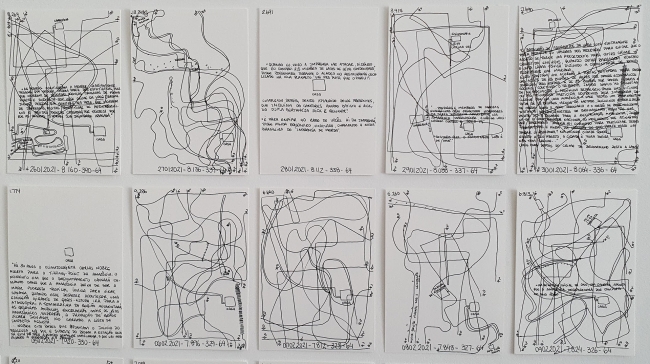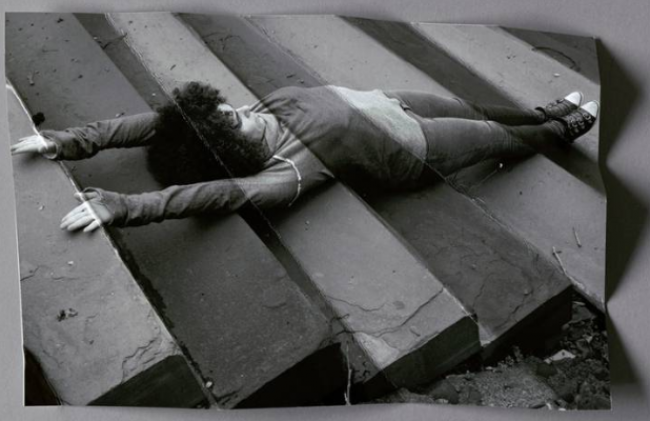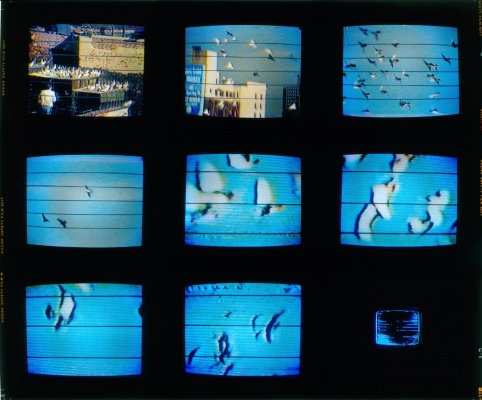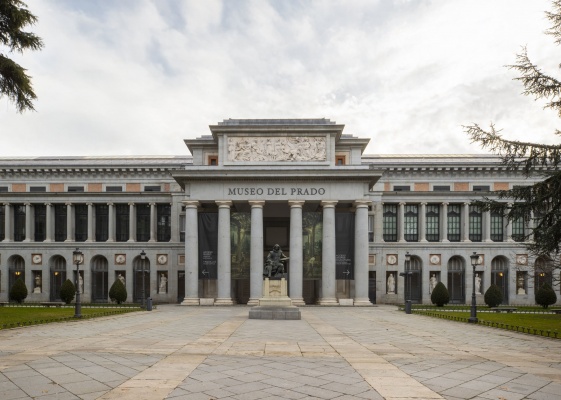Galerías y otras organizaciones que le representan
Organizaciones con obra
Profesionales con obra
Profesionales que le representan
Descripción del Artista
“The indissoluble relationship between art and life is at the heart of Ana Amorim’s practice. Since the 1980s, she has developed a body of work in which the movements of everyday life are recorded and registered with such rigor that there is no effective difference between being alive and making art. In this sense, she belongs within an artistic lineage that includes artists like Tehching Hsieh, On Kawara, Chris Burden, or Marina Abramovic. Ana Amorim developed her work in São Paulo, Brazil, the USA, UK, New Zealand, Australia, Spain, and other locations. Broadly speaking, her work consists of two distinct but related ongoing practices: Mental Maps in which she traces her daily movements from memory at the end of each day, and Passage of Time in which she records each passing second with numbers and graphic marks.
In 1988, Amorim drafted her first important text: “Conceptual Decisions”, a manifesto in which she set the very strict terms for the production for the following ten years, including statements such as, “I would use inexpensive materials” or “I would not sell the work”. In 2001 she elaborated these ideas into a contract reflecting her beliefs in how her art should be shown. The terms were intentionally so onerous (for example no sponsorship by companies that produced environmental or social damage) that she effectively self-isolated from the commercial and not-for-profit art world. These terms were in place for almost two decades, during which time she continued to produce her work daily, but it was unknown outside a very small group of friends and supporters. She also sold no works during this period. As a result of this decision, her body of work is almost completely intact.
Amorim’s work crosses two important traditions in contemporary art practice. On the one hand the idea of art produced by instructions and contract, which dates back to Moholy-Nagy’s works ordered by telephone from the 1920s, but which came to maturity in Seth Siegelaub’s Artist’s Contract of 1970 in which the artist takes control of the distribution and circulation of his or her work. The other tradition is that of breaking down the divisions between the art world and everyday life, which also has its roots in avant-garde practice, but which was revitalized by The Situationist International, Fluxus, and other groups. Amorim builds on these traditions, while also incorporating the element of embroidery and textile, adding a potential feminist reading to the work. By bringing together a strict conceptual practice with the ‘minor’ art of textile, she expands the traditional male field of conceptualist art into new areas.”
Gabriel Pérez-Barreiro
Art historian and curator; advisor to the Colección Patricia Phelps de Cisneros; chief curator of the 33rd Bienal de São Paulo (2018) and the 6th Bienal do Mercosul (2007).
_____________________________________________________________________
“Ana Amorim was educated in the United States and then integrated the lineage of artists active in the 1970s' conceptual movement, mostly in New York. Her obsessive logging of everyday activities and long-term interventions resembled the practices of On Kawara and Tehching Hsieh.
For over two decades, Amorim refused to participate in exhibitions sponsored by corporations, or held in commercial galleries or in institutions charging an admission fee, so her work remained virtually invisible. However, this also meant that she has been one of the very few Brazilian artists to enter the field of institutional critique.
Since 1988, Amorim has performed Contar segundos [Counting seconds] several times. She spends an hour counting seconds while marking a line in her notebook each second, thus producing a record of the intervention. At one minute intervals, she logs the total number of minutes that have gone by. The same level of concentration and dedication is seen in other projects too, particularly Mapas [Maps]: over more than three decades, at the end of each day, she has drawn up a mental map of all her movements during that day. In some cases, these maps fuse into larger works such as the series of large-scale wall installations Grandes telas [Large canvases], consisting of 365 parts, each of them representing an ephemeral, poetic, and personal portrait of a day.”
Jacopo Crivelli Visconti
Independent critic and curator; chief curator for the 34th edition of the Bienal de São Paulo; author of the book Novas derivas (2014); member of the team of the Fundação Bienal de São Paulo (2001 to 2009); curator of the official Brazilian participation at the 52nd Biennale di Venezia (2007).

Mercado, 05 abr de 2022
Llamativo trasiego de artistas en galerías brasileñas de primer nivel
Por GUSTAVO PéREZ DIEZ
Las artistas brasileñas Ana María Tavares, Cinthia Marcelle y Ana Amorim son tres de las nuevas incorporaciones en galerías.

Creación, 17 jun de 2019
Nuevos fichajes y colaboraciones en galerías de toda Iberoamérica
Por PAULA ALONSO POZA
Nueve artistas procedentes de España, Brasil, México, EE.UU. y Argentina fichan por galerías iberoamericanas. Son, en su mayoría, mujeres de media carrera o con trayectorias ya consolidadas que comienzan a colaborar ...

Exposición. 08 may de 2025 - 14 sep de 2025 / MNAC - Museu Nacional d'Art de Catalunya / Barcelona, España

Formación. 30 oct de 2025 - 11 jun de 2026 / Museo Nacional del Prado / Madrid, España